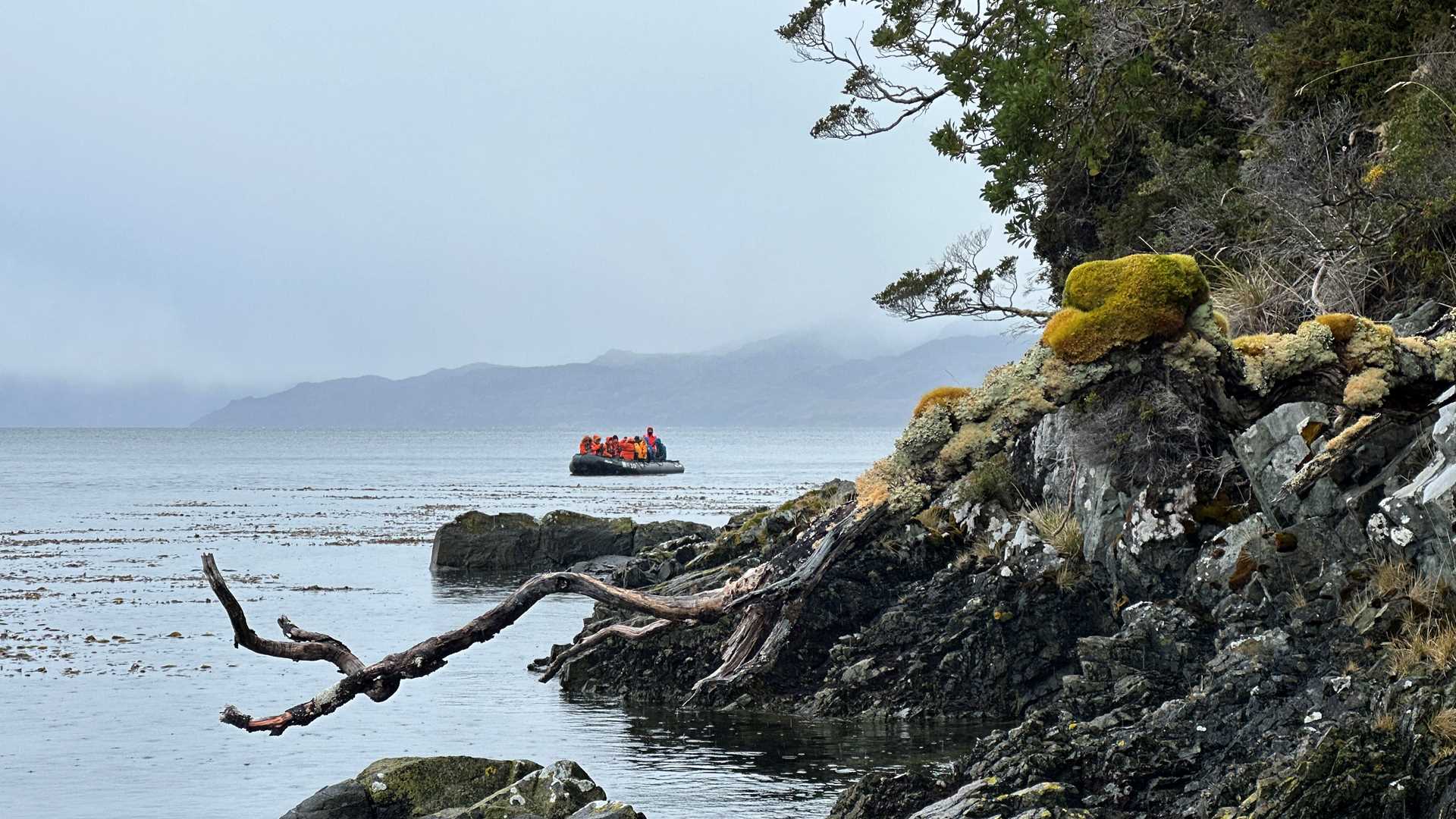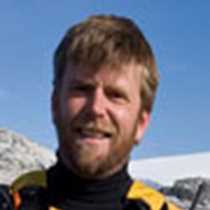This morning we awoke in the historic Straits of Magellan, named after the famous expedition on which they were discovered and during which Captain Juan Sebastian Elcano completed the first circumnavigation of the globe. We positioned the ship in the lee of Isla Carlos, Francisco Coloane Marine Park, and enjoyed a very pleasant Zodiac cruise in calm waters. Dolphins, geese, cormorants, turkey vultures, caracaras, and a kingfisher greeted us as we explored this wild island. After lunch, we navigated into the serene Lissan Cove and prepared the kayaks for a fun adventure. A few small islands were ours to enjoy for the day. Finally, our staff put on an entertaining recap to delight in the day’s journey.
- Daily Expedition Reports
- 22 Nov 2023
Straits of Magellan, Chile , 11/22/2023, National Geographic Resolution
- Aboard the National Geographic Resolution
- Antarctica
Dan Olsen, Expedition Leader
Dan lives in Seward, Alaska, and has worked as a guide and naturalist his whole life. Dan taught sailing, navigation, mountaineering, and kayaking at Outward Bound and aboard tall sailing ships, before shifting to expedition ships.He has been a licen...
Read MoreShare Report
Antarctica and Patagonia: Legendary Ice and Epic Fjords
VIEW ITINERARYRelated Reports
11/14/2021
Read
National Geographic Explorer
LeMaire Channel and Pleneau Island
Morning began early on National Geographic Explorer with a beautiful cruise through the LeMaire channel. As the ship passed beyond the southern end of the channel, it was surrounded by ice with spectacular views of sea ice and icebergs. The Zodiacs were soon lowered to take everyone ashore at Pleneau Island for up close encounters with penguins. In the afternoon, Zodiacs zipped around grounded icebergs as everyone was treated to a cruise through monumental ice sculptures created by glaciers. The day ended as it began, with a trip through the always awe-inspiring LeMaire channel.
11/9/2021
Read
National Geographic Explorer
Jackson Bay, Karukinka Natural Park & Canal San Gabriel
During a rare, perfectly still and windless morning, we landed at Jackson Bay, in Admiralty Sound to visit the most remote section of Karukinka Natural Park, a private protected area managed by the Wildlife Conservation Society. At 330 hectares, this area protects some of the southernmost forests, grasslands and peatlands of the planet together with a vast array of wildlife including several endemic bird species and a colony of breeding elephant seals. We hiked through large stands of primeval forest to get to a waterfall that drains the overflow of some alpine glaciers still blanketing the peaks that flank the valley we walked toward.







